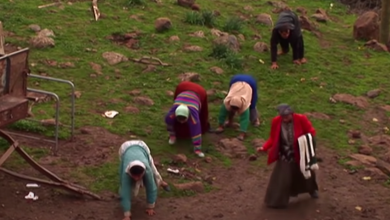‘I have a 50:50 chance of developing Alzheimer’s Disease in my 50s’

Image source, Jennings family
When John Jennings’ mother began showing signs of Alzheimer’s disease at age 50, he and his sister Emily knew they, too, would have a 50/50 chance of developing the disease that causes dementia. But a letter written by their mother nearly 40 years ago could be the key to changing the course of the future of their family and thousands of others.
“You know, you tend to get older, people buy a pair of shoes and think, ‘Those will see me out.’ Basically, I’ve always had that attitude,” says John Jennings, 39. .
“I’m thinking, ‘Should I buy a new laptop?’ – because I’ve had Macs that lasted 10 years in the past.”
John, who lives in Edinburgh with his husband Matt, is not bothered by material possessions because he is unsure whether he inherited a faulty gene from his mother that could trigger early-onset Alzheimer’s.
“I just discovered that what makes me happiest is being surrounded by people who love me,” he says. “So we spend a lot of time building relationships and that seems to be the most fulfilling part of life.”
But it is these social connections that John is most afraid of losing if he carries the genetic mutation and develops the disease in his 50s, like his mother Carol.
“I try to learn a lot of languages and I exercise obsessively. I know that for most people this would significantly reduce my risk of getting Alzheimer’s disease,” says John, “but the The fact is that, for me, it’s not enough. It doesn’t make any difference.”
Image source, Jennings family
In the 1980s, Alzheimer’s disease was widely thought to have no family connection, but when John’s grandfather – Carol’s father – and his four siblings were all diagnosed with the disease in the fifty, Carol understood that this could not be a coincidence.
A new documentary for BBC Two tells the story of how Carol, a teacher from Coventry, helped change the face of Alzheimer’s research with a handwritten letter. She always tried to find solutions to problems, John says, it was “her way of taking some control over the situation.”
In 1986, Carol wrote to a team at University College London (UCL) who were studying the disease. By analyzing his family’s genetics, the team in 1991 identified a gene shared by all affected members of his family. A mutation in the amyloid precursor protein (APP) gene meant too much amyloid proteins built up in the brain, which clump together to form plaques and cause brain cells to die.
Carol gave John and his older sister Emily, 42, a 50% chance of inheriting the genetic mutation that triggers early-onset Alzheimer’s disease.
“If someone carries the gene, they will develop the disease at around the same time as their family members,” says Dr Cath Mummery, consultant neurologist and head of clinical trials at UCL’s Dementia Research Centre.
“So they are aware of the ticking time bomb, especially as they approach that age.”
Image source, Jennings family
“It’s tempting to think that if I found out I had it, Emily didn’t have it, and vice versa,” John says. “But it might be that we both do. It might be that neither of us does.”
For people at risk of genetic Alzheimer’s disease, a blood test may be carried out – after consultation and advice from a specialist – to determine whether the genetic abnormality causing the disease is present.
John’s mother, Carol, chose not to take the test because she thought there was no point in worrying, John says, but while he respects his mother’s choice, it’s not the path he wishes to take.
“We could have planned better if we had known she had done it,” John says.
Image source, Jennings family
He was 21 when his mother began showing symptoms in the mid-2000s. Her condition slowly deteriorated until she was bedridden and unable to speak.
Each stage of his mother’s decline was “like a new ton of bricks to deal with,” he says.
Carol died in March this year. She requested that her brain be donated for scientific research.
John says he’ll definitely do the blood test at some point – that’s just when – and he’ll decide the timing with his sister. It is not the moment.
“I think if one of us took the test, the other would probably follow pretty quickly afterward,” John says.
“It almost feels like this is a decision we have to make together.”
Image source, Jennings family
The only thing that could move John’s decision to take the test forward would be if he needs to know his genetic status to begin medical treatment.
Although genetic Alzheimer’s disease is rare, it is in many ways similar to the more typical Alzheimer’s disease that develops in other people later in life, Dr. Mummery says, and can be used as a model to find new treatments.
“If we can find a treatment that works in this genetic form, then we can extrapolate to a treatment for the more common non-genetic Alzheimer’s disease,” she says.
This all stems from the work Carol has started with the team at UCL, says Dr Mummery.
As work continues on developing treatments, John’s coping mechanism is to remain resilient and have a positive attitude. He also recommends sharing your experiences with others in support groups.
He continues his mother’s legacy, helping to change the course of the future, by participating in Alzheimer’s disease research and regularly performing brain scans.
John says he believes we are “on the cusp” of seeing treatments that can help stop the disease in its tracks.
“I really wish I lived long enough to see that – and I think I could.”
If you are affected by any of the issues raised in this story, support and advice is available via BBC action line
News Source : www.bbc.com
Gn Health





